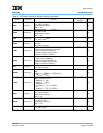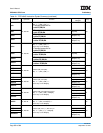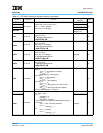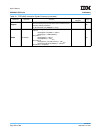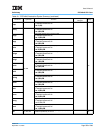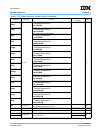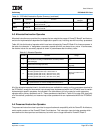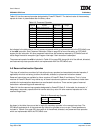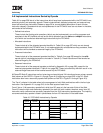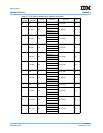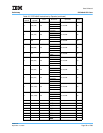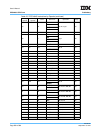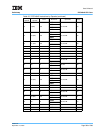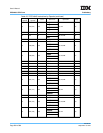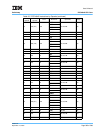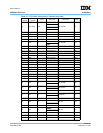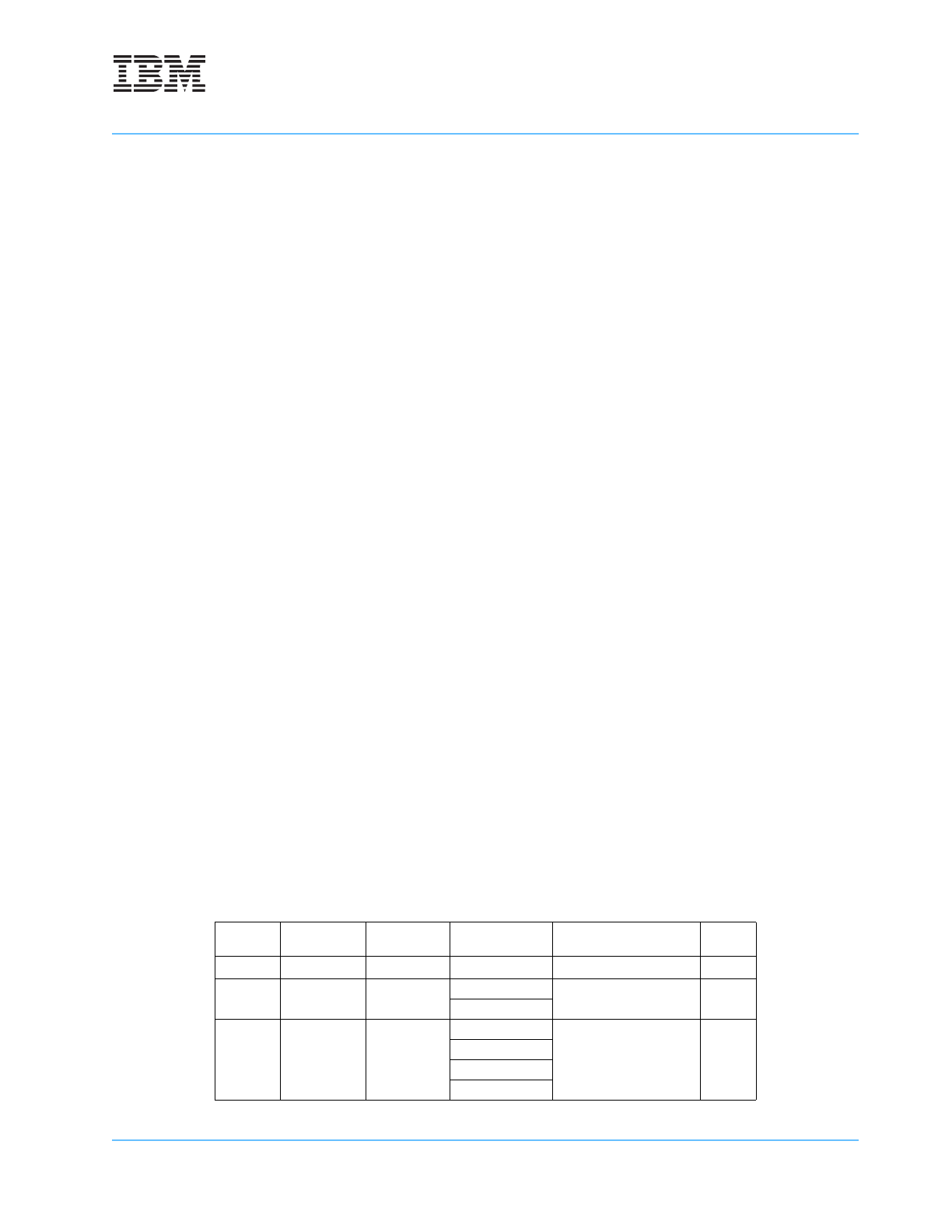
User’s Manual
Preliminary PPC440x5 CPU Core
instalfa.fm.
September 12, 2002
Page 559 of 589
A.6 Implemented Instructions Sorted by Opcode
Table A-5 on page 559 lists all of the instructions which have been implemented within the PPC440x5 core,
sorted by primary and secondary opcode. These include defined, allocated, preserved, and reserved-nop
class instructions (see Instruction Classes on page 53 for a more detailed description of each of these
instruction classes). Opcodes which are not implemented in the PPC440x5 core are not shown in the table,
and consist of the following:
• Defined instructions
These include the floating-point operations (which may be implemented in an auxiliary processor and
executed via the AP interface), as well as the 64-bit operations and the tlbiva and mfapidi instructions,
all of which are handled as reserved-illegal instructions by the PPC440x5.
• Allocated instructions
These include all of the allocated opcodes identified in Table A-2 on page 557 which are not already
implemented within the PPC440x5 core. If not implemented within an attached auxiliary processor, these
instructions will be handled as reserved-illegal by the PPC440x5.
• Preserved instructions
These include all of the preserved opcodes identified in Table A-3 on page 558 except for the mftb
opcode (which is implemented and thus included in Table A-5). These instructions will be handled as
reserved-illegal by the PPC440x5.
• Reserved instructions
These include all of the reserved opcodes as defined by Appendix A.5 on page 558, except for the
reserved-nop opcodes identified in Table A-4 on page 558. These instructions by definition are all in the
reserved-illegal class and will be handled as such by the PPC440x5.
All PowerPC Book-E instructions are four bytes long and word aligned. All instructions have a primary opcode
field (shown as field OPCD in Figure A-1 through Figure A-9, beginning on page 522) in bits 0:5. Some
instructions also have a secondary opcode field (shown as field XO in Figure A-1 through Figure A-9).
The “Form” indicated in the table refers to the arrangement of valid field combinations within the four-byte
instruction. See Appendix A.1 on page 519, for the field layouts of each form.
Form X has a 10-bit secondary opcode field, while form XO uses only the low-order 9-bits of that field.
Form XO uses the high-order secondary opcode bit (the tenth bit) as a variable; therefore, every form XO
instruction really consumes two secondary opcodes from the 10-bit secondary-opcode space. The implicitly
consumed secondary opcode is listed in parentheses for form XO instructions in the table below.
Table A-5. PPC440x5 Instructions by Opcode
Primary
Opcode
Secondary
Opcode
Form Mnemonic Operands Page
3D
twi
TO, RA, IM 443
48 X
mulhhwu
RT, RA, RB 376
mulhhwu.
4 12 (524) XO
machhwu
RT, RA, RB 352
machhwu.
machhwuo
machhwuo.



